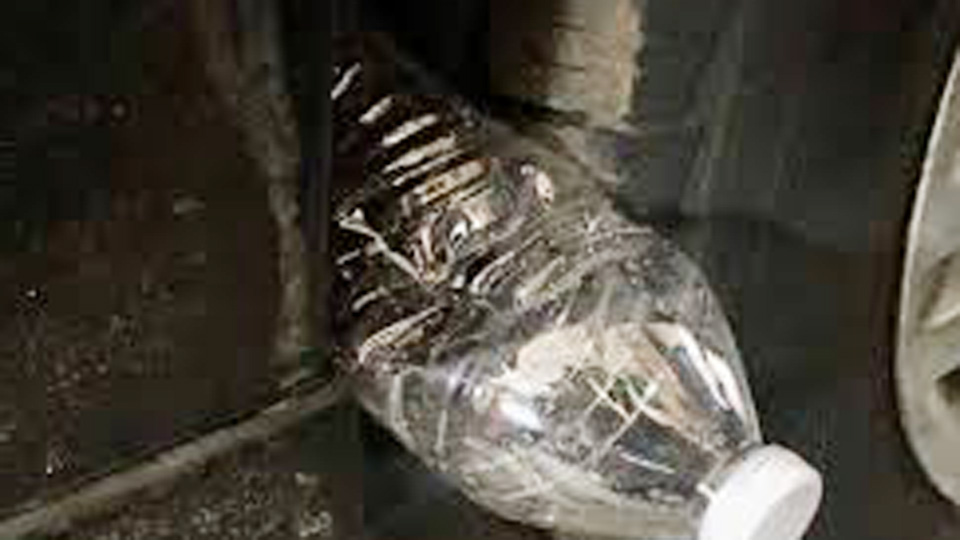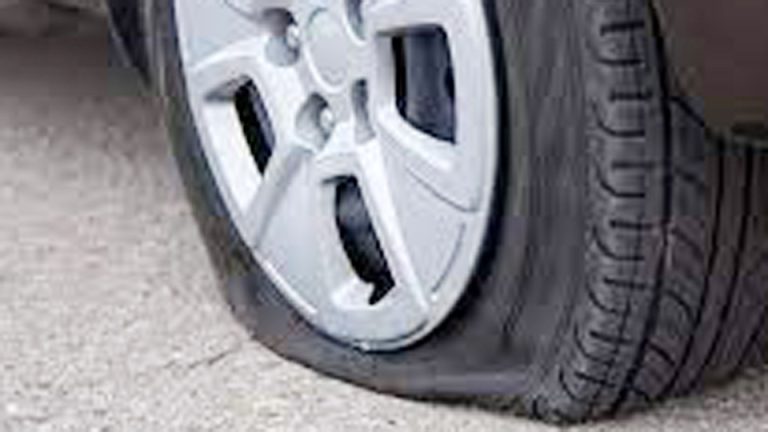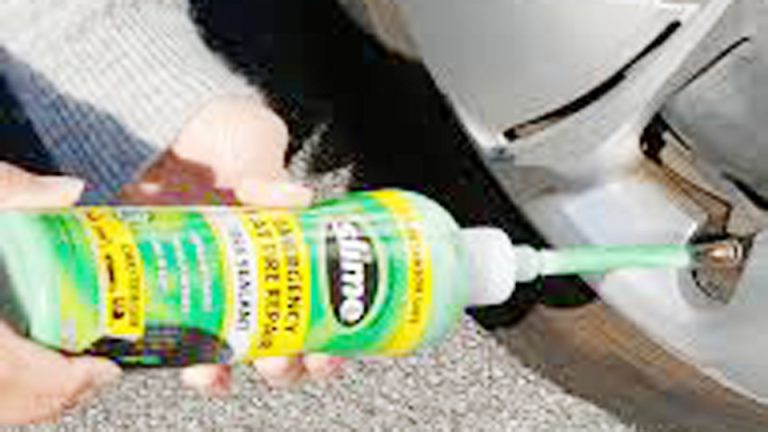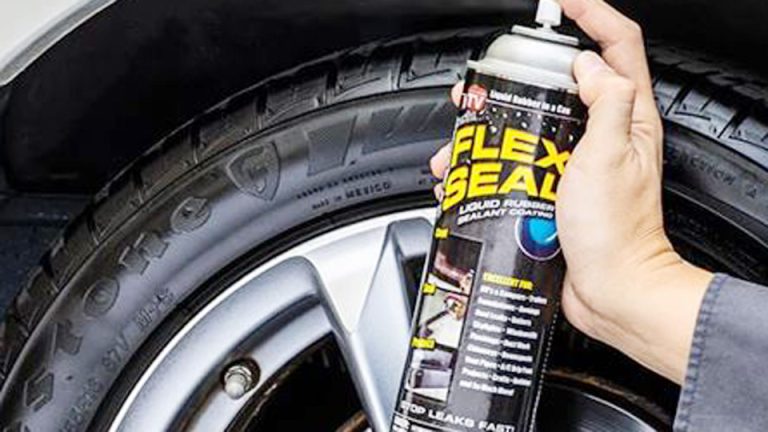The first time I saw someone stick a plastic bottle on their car tire, I’ll admit—I was puzzled. I thought, “Why do you put a bottle on your car tire? Is it some kind of hack or just a prank?” Over time, I learned that this simple trick can actually reveal a lot about your vehicle’s health and safety. Many drivers run into issues like uneven tire wear, poor alignment, or hidden suspension problems without even realizing it, and the bottle-on-the-tire method is one of those old-school ways to spot trouble before it gets expensive.
It might look odd, but it can save you money on premature tire replacement, improve fuel efficiency, and even prevent accidents caused by poor handling. In this guide, I’ll break down why some drivers use this trick, what it can tell you about your tires, and whether it’s worth trying on your own car.

Image by savedelete
The Origins of the Bottle on Tire Trend
Back when I was starting out as a mechanic, urban legends about car safety were everywhere, from coins on door handles to zip ties on mirrors. The bottle-on-tire thing feels like the latest in that lineup. From what I’ve gathered through years of chatting with drivers and keeping an eye on trends, it started circulating online around 2018 or so, fueled by videos and posts claiming it could save your car—or your life.
Essentially, the idea is that bad guys might wedge an empty plastic bottle, like a soda or water one, into your wheel well, usually on the passenger side where it’s less noticeable. When you drive off, the bottle crushes under the tire, making a loud popping or crunching noise. You pull over to check it out, hop out of the car (maybe leaving it running), and bam—while you’re distracted, they swoop in to steal your stuff or even the whole vehicle. It’s clever in theory, preying on our natural curiosity as drivers.
I’ve had buddies tell me stories of hearing weird noises and stopping on deserted highways, only to realize it was something harmless like a loose hubcap. But in a high-crime area, that split-second vulnerability could be risky.
Why does this matter? In the US, where we log billions of miles annually on everything from interstates to backroads, parking security is huge. According to what I’ve seen in my line of work, thefts often happen in everyday spots like mall lots or apartment complexes. This trick, if real, targets solo drivers or those in unfamiliar areas, like when you’re on a cross-country haul. It’s not just about losing your car—it’s the hassle of insurance claims, downtime without wheels, and that nagging feeling of violation.
Is the Bottle Trick a Real Theft Danger?
Let’s get real here—I’ve never personally encountered this exact scenario in all my years wrenching on cars or hearing tales from customers. But that doesn’t mean it’s total fiction. Think about it: Car thieves are opportunistic, and distractions are their best friend. I’ve fixed up vehicles after break-ins where the owner got out for “just a second” to grab something, and poof, valuables gone. So, while the bottle specific might be exaggerated, the principle holds water.
From my experience, this tactic—if it happens—thrives in urban environments like Chicago or LA, where parking is tight and people are rushed. Rural areas? Less likely, but still, on a lonely rest stop during a family vacation, you’d want to stay alert. The “why” behind it is simple: It buys the thief time.
You hear the noise, assume a flat tire or debris, and investigate without shutting off the engine. Pro tip from me: Always kill the ignition and pocket your keys before stepping out. It’s a habit I drilled into my kids when they started driving.
To gauge if it’s legit, consider similar tricks I’ve dealt with. For instance, slashed tires to strand you or fake notes on windshields to lure you close. In one case, a client of mine found a flyer under his wiper in a Walmart lot—turned out it was a ploy to get him bending over while someone rifled through the passenger door. The bottle fits that mold, but without hard stats (and trust me, police reports I’ve seen rarely mention bottles), it’s more legend than epidemic. Still, awareness is free insurance.
Why You Should Never Intentionally Put a Bottle on Your Tire
Okay, flipping the script—some folks misinterpret this and think they should place the bottle themselves as a “hack” for tire health or theft deterrence. Big no from me. I’ve tested plenty of DIY ideas in my garage, from homemade rust removers to alignment checks, and this one doesn’t hold up.
First off, on tire maintenance: Claims say it prevents flat spots from long parking or regulates pressure in cold weather. Nonsense. Tires are engineered for stationary periods—think about airport parking lots where cars sit for weeks. A bottle won’t do squat except potentially scratch your rims or get lodged, causing uneven wear. In snowy states like Michigan, where I once helped a friend dig out his sedan, extreme cold can drop PSI, but the fix is proper inflation, not props.
As for theft prevention? Putting a visible bottle might actually signal to crooks that you’re paranoid or alone, drawing unwanted attention. I’ve advised enthusiasts at car meets: Blend in. Park under lights, use steering locks, and install alarms that scream if tampered with. No need for gimmicks that could backfire—like the bottle rolling away and causing a hazard.
When to avoid this entirely: Always. If you’re traveling solo through sketchy areas, focus on real strategies I’ll cover next. And a warning: In hot climates like Arizona, plastic can melt onto your tire, creating a mess you’d have to scrape off. Been there with melted tar—not fun.
Proven Ways to Beef Up Your Car’s Security
Alright, enough debunking—let’s talk action. As someone who’s installed aftermarket alarms and tracked down stolen parts, I know what works. Car theft isn’t random; it’s preventable with smart habits tailored to US roads, where we deal with everything from highway bandits to urban smash-and-grabs.
Start with the basics: Always do a 360-walk around your vehicle before driving off. I’ve made this routine since my trucking days, checking for dents, leaks, or yes, suspicious objects like bottles. Takes 30 seconds, saves headaches.
For upgrades, consider these options I’ve recommended to clients:
Steering Wheel Locks: Old-school but effective. Brands like The Club deter quick grabs. Pros: Cheap, visible deterrent. Cons: Bulky to store.
GPS Trackers: Hidden devices like Tile or Apple AirTags. I’ve helped recover a buddy’s Jeep this way after it vanished from a trailhead. Pros: Real-time location. Cons: Subscription fees.
Kill Switches: DIY or pro-installed to cut engine power. Great for classics without modern immobilizers.
Here’s a quick comparison table of popular security add-ons:
| Device | Cost Range | Ease of Install | Effectiveness Against Theft | Best For |
|---|---|---|---|---|
| Steering Lock | $20-50 | Easy (no tools) | High for opportunistic thieves | Daily drivers in cities |
| GPS Tracker | $30-100 + fees | Moderate (hide it) | High for recovery | High-value or off-road vehicles |
| Dash Cam | $50-200 | Easy (plug-in) | Medium (evidence) | Commuters in traffic-heavy areas |
| Alarm System | $100-500 | Pro recommended | High (sensors) | Newer models without factory alarms |
In US conditions, factor in weather—rain can short cheap electronics, so go quality. For road trips, park in well-lit hotel lots, not isolated spots. And if you’re a DIYer, wire in a battery cutoff switch; I’ve done it on my project car for peace of mind.
Tire Care Tips That Actually Matter
Since we’re on tires, let’s tie this back. Ignoring the bottle myth, real tire maintenance keeps you safe and saves money—I’ve seen neglected tires cause blowouts on highways, turning fun drives into nightmares.
Why it matters: Tires are your only contact with the road. In rainy Florida or icy New York winters, proper tread means control. Check monthly, especially before long hauls.
Easy steps I follow:
- Inspect visually: Look for cuts, bulges, or uneven wear. Feels like the bottle check but actually useful.
- Measure tread: Use a penny—Lincoln’s head should be hidden. If not, replace.
- Check pressure: Use a gauge (not gas station ones—they’re off). Inflate to door-jamb specs.
- Rotate every 5,000-8,000 miles. I’ve extended tire life by 20% this way.
For US drivers, consider all-seasons for mild climates, but switch to winters if you’re in the Northeast. Pros of all-seasons: Versatile, affordable. Cons: Poor in extreme snow. And a heads-up: Driving on underinflated tires wastes gas—big deal with today’s prices.
Real situation: A client once ignored a slow leak, thinking it was minor. Ended up stranded on I-95. Lesson? Monitor and fix early.
What to Do If You Spot Something Odd on Your Vehicle
Finding a bottle or anything suspicious? Don’t panic—handle it smartly. I’ve coached nervous drivers through this over coffee in the shop.
Step-by-step guide:
- Stay inside: If you’re already in the car, drive to a safe, populated area before checking.
- Assess from afar: Park under lights, scan for people lurking.
- Exit safely: Turn off engine, lock doors, keep phone ready.
- Remove the object: Use gloves if possible—could be evidence.
- Report if needed: Call non-emergency police if it feels targeted.
Warnings: Never investigate alone at night. In big cities, thieves work in teams. Better safe than sorry—I once found a tracker on a customer’s car; turned out to be an ex’s doing.
For everyday drivers, this builds confidence. Enthusiasts, integrate it into your pre-drive ritual alongside fluid checks.
Common Car Safety Myths and Real Fixes
Myths like the bottle one clutter the auto world, distracting from real issues. I’ve debunked plenty: No, nitrogen isn’t magic for tires—air works fine. And all-wheel drive doesn’t mean invincible in snow; it’s about traction management.
Instead, focus on proven stuff. For upgrades, LED headlights improve visibility without blinding others. Pros: Longer life, brighter. Cons: Higher upfront cost.
In hot Southwest summers, myths say park with windows cracked—actually invites break-ins. Park in shade, use sunshades.
Tailored Advice for Solo Drivers and Road Trippers
Traveling alone amps up risks, especially for women or new drivers I mentor. The bottle trick targets isolation, so counter with prep.
Pack essentials: Jumper cables, tire kit, flashlight. I’ve fixed flats on deserted routes—always have a jack and spare.
Apps like Waze flag safe stops. In coastal areas, watch for salt corrosion on undercarriage; rinse after beach trips.
Pro tip: Join AAA—saved my bacon more times than I count.
Keeping Your Ride Road-Ready in Any Climate
US weather varies wildly, affecting tires and security. In humid Southeast, mold can build if parked long—ventilate. Dry West? Dust clogs sensors.
Maintenance list:
- Monthly: Pressure, tread.
- Seasonal: Align after potholes (common in Midwest springs).
- Annual: Professional inspection.
This prevents surprises, bottle or not.
Stay Vigilant and Drive Smart
Look, the whole “why do you put a bottle on your car tire” thing boils down to a mix of myth and mild caution—it’s not the epidemic some videos claim, but it reminds us to stay aware. From my garage to yours, the real key to auto happiness is prevention: Secure your car, maintain those tires, and trust your gut. Next time you park, do that quick walk-around, and hit the road with confidence. Keep a small flashlight in your glovebox; it’s a game-changer for night checks.
Frequently Asked Questions
What should I do if I hear a strange noise while driving?
Pull over safely in a lit area, turn off the engine, and inspect carefully. It could be debris, but always prioritize security.
Is the plastic bottle tire trick common in the US?
It’s rare and mostly unverified, but theft tactics evolve, so vigilance in high-crime spots like urban lots is smart.
How can I check my tire pressure without a gauge?
Don’t—invest in a cheap digital one. Gas station gauges are unreliable; do it cold for accuracy.
Are there better ways to prevent flat spots on tires?
Drive regularly or use tire cradles for storage. Bottles won’t help; proper inflation is key.
Should I worry about other objects on my car?
Yes, like notes or ties—could be distractions. Remove safely and stay alert.
(Word count: 2,856)



